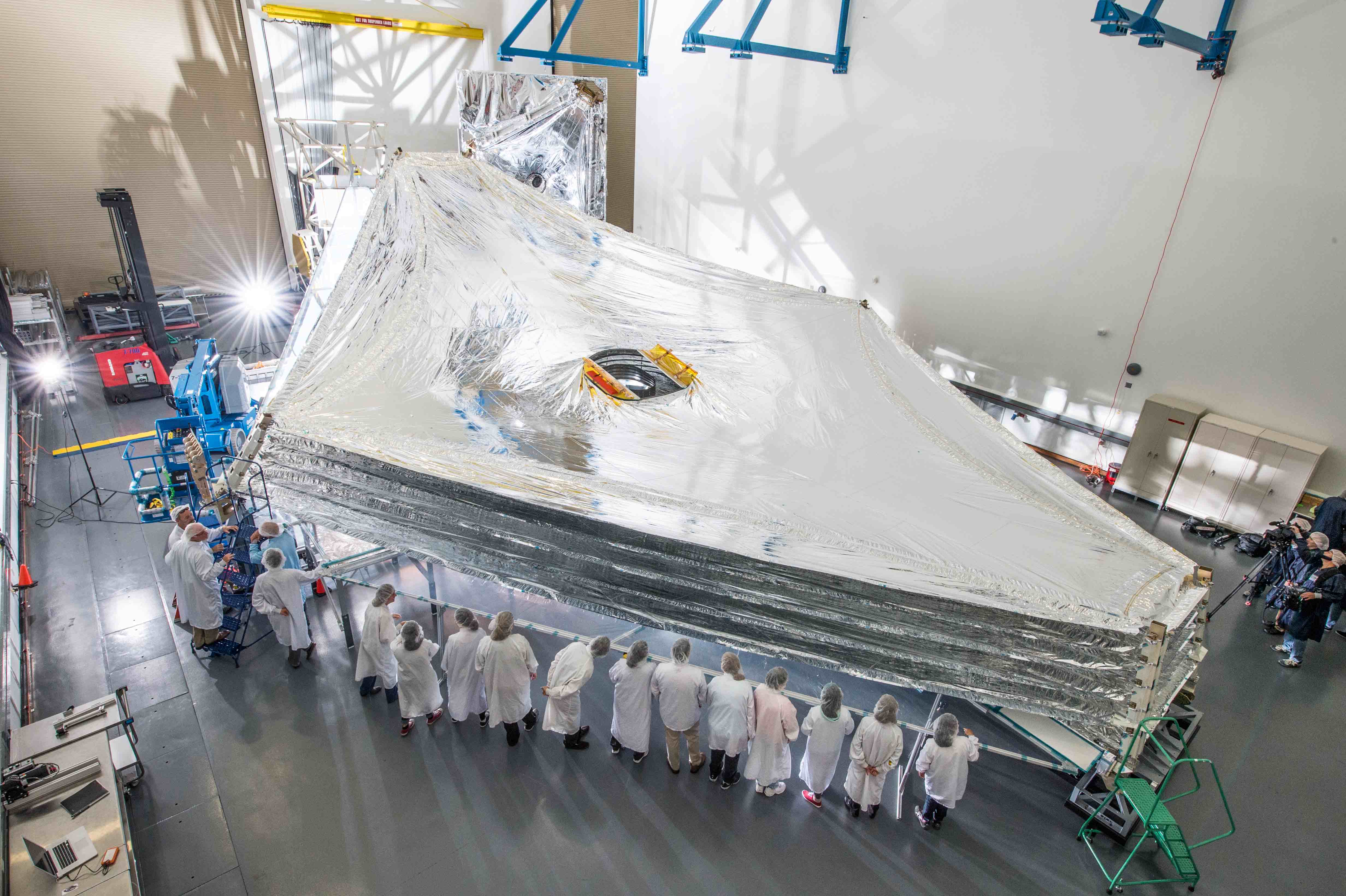Every part of the James Webb Space Telescope’s (JWST’s) deployment is nerve-wracking, but some of the most nail-biting moments will happen on New Year’s Eve and New Year’s Day.
We’re on Day 5 of the Webb Telescope’s 30 Days of Terror, and so far, the observatory’s engineering team has successfully checked off all the boxes on its to-do list (get your own check-off list here.)
But starting on December 31 comes the task that is among the most worrisome: unfolding the giant sunshield. The enormous sunshield is about 70 by 47 feet (21 by 14 meters) when deployed, or approximately the size of a tennis court.

The entire set of sequences will span over two days. Starting on December 31 comes the Sunshield Port Side Mid-Boom Extension, which pulls out the sunshield out on one side. This has a current scheduled start time of 9:20 AM EST (1420 UTC). If all goes well, the Starboard side will be deployed on January 1.
Here’s a video that shows the major deployments. The sunshield deployment starts at about 1:45 in the video:
“For launch, the sunshield was folded like a parachute and stowed onto the forward and aft unitized pallet structures (UPSs),” explained JWST Project Scientist Michael McElwain, in a NASA blog post. “Both the telescope and sunshield’s support structures are mechanically connected to each other and the spacecraft bus in order to fit within the Ariane 5’s fairing and withstand the dynamic launch environment.”
The sunshield is made of five ultrathin membranes made of a shiny material called Kapton. These sheets will be unfolded by cables and pulleys in a slow and deliberate process. Today, Webb’s engineers successfully conducted the first step: releasing and rolling up the sunshield covers that protected the thin layers of Webb’s sunshield during launch. After the team electrically activated release devices to release the covers, they executed commands to roll the covers up into a holding position, exposing Webb’s sunshield membranes to space for the first time. That deployment took about an hour.
McElwain explained that the telescopic mid-booms sequentially push out from the spacecraft bus perpendicular to the telescope line of sight, pulling the folded stack of sunshield layers out into the final, but still untensioned, configuration.
This complicated deployment involves around 7,000 parts, including 400 pulleys, numerous cables and eight motors. But the sunshield’s deployment is crucial to shading the telescope from any heat or light from the Sun, Earth and Moon, to keep the telescope’s infrared components as cold as possible. This will allow JWST to detect the faint signatures of distant objects in the universe. The telescope and scientific instruments will start to cool rapidly in the shade of the sunshield, but it will take several weeks for them to cool all the way down and reach stable temperatures.
If all goes well the next two days, each sunshield layer will then be tensioned into position, starting with the Sun-facing layer first and finishing with the telescope-facing layer.
“While these steps have been tested on the ground and operationally rehearsed in the Mission Operations Center, these critical activities must be executed for a successful mission,” McElwain said. “Best wishes to our team, and stay cool, Webb!”
Find out more details about the sunshield here.
Get the latest updates on Webb at NASA’s Where’s Webb
Find info on more ways to get additional updates here.

